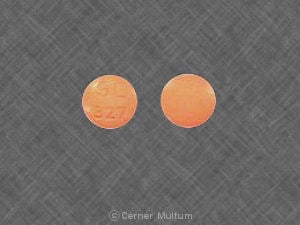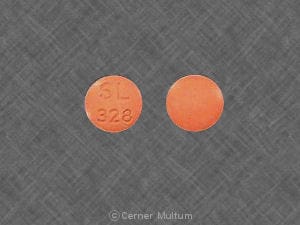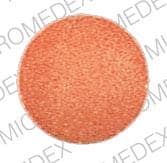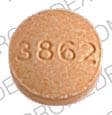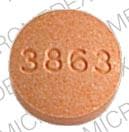Dosage Forms
Excipient information presented when available (limited, particularly for generics); consult specific product labeling.
Solution, Injection, as hydrochloride:
Generic: 20 mg/mL (1 mL)
Tablet, Oral, as hydrochloride:
Generic: 10 mg, 25 mg, 50 mg, 100 mg
Pharmacology
Mechanism of Action
Direct vasodilation of arterioles (with little effect on veins) with decreased systemic resistance. Although exact mechanism unknown, arterial vasodilation may occur via inhibition of calcium release from the sarcoplasmic reticulum and inhibition of myosin phosphorylation in arterial smooth muscle cells (McComb 2016).
Pharmacokinetics/Pharmacodynamics
Absorption
Oral: Rapidly absorbed
Metabolism
Hepatically acetylated; extensive first-pass effect (oral)
Excretion
Urine (as metabolites)
Onset of Action
IV: 10 to 80 minutes
Time to Peak
Plasma: Oral: 1 to 2 hours
Duration of Action
IM, IV: Up to 12 hours (Marik 2007); Note: Duration may vary depending on acetylator status of patient. Hypotension due to hydralazine may last longer even though the circulating half-life is much shorter (Marik 2007; O’Malley 1975).
Half-Life Elimination
3 to 7 hours
Protein Binding
87%
Use in Specific Populations
Special Populations Note
Slow acetylators: Patients will generally have higher plasma levels of hydralazine and require lower doses to maintain control of BP.
Use: Labeled Indications
Hypertension: Management of moderate to severe hypertension. Note: Not recommended for the initial treatment of hypertension (ACC/AHA [Whelton 2017])
Use: Off Label
Heart failure with reduced ejection fraction (HFrEF)ayes
Data from a randomized, double-blind trial comparing enalapril and hydralazine plus isosorbide dinitrate in patients with chronic HFrEF support the use of hydralazine (in combination with isosorbide dinitrate) in patients with intolerance to ACE inhibitor therapy Cohn 1991. Data from a randomized, double-blind, placebo-controlled trial in black patients with NYHA class III or IV HFrEF on optimal guideline-directed medical therapy support the use of hydralazine (in combination with isosorbide dinitrate) for the management of this condition Taylor 2004.
Based on the American College of Cardiology Foundation/American Heart Association (ACCF/AHA) guidelines for the management of heart failure, hydralazine (in combination with isosorbide dinitrate) is effective and recommended as additional therapy to optimal guideline-directed medical therapy for self-identified African-American patients with persistent NYHA class III or IV HFrEF or for patients who do not tolerate an ACE inhibitor or an ARB ACC/AHA [Yancy 2013]. Some experts recommend hydralazine (in combination with isosorbide dinitrate) in addition to optimal guideline-directed medical therapy for black and nonblack patients with persistent NYHA class III or IV HFrEF, particularly for those with low output states or hypertension, or for patients who do not tolerate an ACE inhibitor, ARB, or angiotensin II-neprilysin inhibitor (ARNI) Colucci 2019.
Hypertensive emergency in pregnancy or postpartum (including acute-onset hypertension in preeclampsia/eclampsia)yes
Based on the American College of Obstetricians and Gynecologists (ACOG) opinion on emergent therapy for acute-onset, severe hypertension during pregnancy and the postpartum period, the use of hydralazine is effective and recommended as a treatment option in pregnant and postpartum patients who are experiencing acute-onset, severe hypertension with preeclampsia or eclampsia ACOG 2019.
Contraindications
Hypersensitivity to hydralazine or any component of the formulation; coronary artery disease; mitral valve rheumatic heart disease
Canadian labeling: Additional contraindications (not in US labeling): Idiopathic systemic lupus erythematosus and related diseases; severe tachycardia and heart failure (HF) with high cardiac output (eg, in thyrotoxicosis); myocardial insufficiency due to mechanical obstruction (eg, aortic or mitral stenosis, constrictive pericarditis); isolated right ventricular HF due to pulmonary hypertension; acute dissecting aneurysm of the aorta; porphyria (injection only)
Dosage and Administration
Dosing: Adult
Heart failure with reduced ejection fraction (HFrEF) (off-label use):
Note: As additional therapy for persistent NYHA class III or IV HFrEF despite optimal medical therapies or for patients who cannot tolerate an ACE inhibitor, ARB, or angiotensin II-neprilysin inhibitor (ARNI) (ACCF/AHA [Yancy 2013]; Colucci 2019).
Oral: Initial: 25 to 50 mg 3 or 4 times daily in combination with isosorbide dinitrate 3 or 4 times daily; titrate dose every 2 to 4 weeks; maximum dose: 300 mg/day in divided doses (ACCF/AHA [Yancy 2013]). Some experts initiate 25 mg 3 times daily in combination with isosorbide dinitrate 3 times daily; evaluate every 2 to 4 weeks and gradually titrate as tolerated to a target dose of 75 mg 3 times daily in combination with isosorbide dinitrate 3 times daily (Colucci 2019; Meyer 2019). Note: May also consider use of the fixed-dose combination of isosorbide dinitrate/hydralazine instead of separate components (ACCF/AHA [Yancy 2013]; ACC/AHA/HFSA [Yancy 2017]).
Hypertension (alternative agent):
Note: Not recommended for initial management but may be considered as additional therapy for resistant hypertension in patients who do not respond adequately to combination therapy with preferred agents (ACC/AHA [Whelton 2017]).
Oral: Initial: 10 mg 4 times daily for 2 to 4 days, then 25 mg 4 times daily for the remainder of the week followed by titration based on response to 50 mg 4 times daily (manufacturer's labeling); usual dosage range: 100 to 200 mg/day in divided doses (ACC/AHA [Whelton 2017]). Maximum dose: 300 mg/day (manufacturer's labeling); however, doses >200 mg/day are generally avoided due to increased risk of lupus-like reaction. Consider combining with a beta-blocker and/or diuretic since hydralazine is associated with reflex tachycardia and fluid retention (ACC/AHA [Whelton 2017]).
Hypertensive emergency (alternative agent):
Note: For severe elevation in blood pressure associated with new or worsening target-organ damage. Hydralazine is generally not recommended due to unpredictable and prolonged antihypertensive effects (Marik 2007):
IM, IV: 10 to 20 mg every 4 to 6 hours as needed; may increase dose to a maximum of 40 mg/dose if necessary; some experts recommend a maximum of 20 mg/dose. Consider combining with a beta-blocker since hydralazine is associated with reflex tachycardia (ACC/AHA [Whelton 2017]; Elliott 2019; Rhoney 2009; manufacturer's labeling).
Hypertensive emergency in pregnancy or postpartum (including acute-onset hypertension in preeclampsia/eclampsia) (off-label use):
Note: For acute-onset, severe, persistent (eg, ≥15 minutes) hypertension (ACOG 2019).
IV: Initial: 5 or 10 mg; repeat with 5 to 10 mg doses every 20 minutes if blood pressure continues to exceed thresholds (ACOG 2019; Magee 2014; Too 2013). If systolic blood pressure or diastolic blood pressure remains above threshold after a total cumulative dose of 20 to 30 mg, another agent should be used (ACOG 2019; August 2019).
Perioperative hypertension (alternative agent):
Note: For patients with chronic hypertension prior to surgery, restart oral therapies as soon as appropriate once hemodynamically stable. The antihypertensive effects of hydralazine are less predictable than other parenteral antihypertensives and can cause reflex tachycardia. Some experts suggest doses in the low end of the dosing range (Broussard 2018; Lien 2012).
IV: 5 to 20 mg every 4 to 6 hours as needed (Broussard 2018; Lien 2012)
Dosing: Geriatric
Refer to adult dosing.
Dosing: Pediatric
Note: Individualize dose; titrate to patient response.
Heart failure, afterload reduction: Limited data available (Artman 1987, Friedman 1985, Park 2014): Note: May cause reflex tachycardia; use in combination with beta-blocker therapy has been suggested (Park, 2014).
IV:
Infants: 0.1 to 0.5 mg/kg/dose every 6 to 8 hours; maximum dose: 2 mg/kg/dose
Children and Adolescents: 0.15 to 0.2 mg/kg/dose every 4 to 6 hours; maximum dose: 20 mg/dose
Oral: Infants, Children, and Adolescents: 0.75 to 3 mg/kg/day divided every 6 to 12 hours; maximum daily dose: 7 mg/kg/day or 200 mg/day whichever is less
Hypertension, chronic: Children and Adolescents: Oral: Initial: 0.75 mg/kg/day in 2 to 4 divided doses, maximum initial dose: 10 mg/dose; may increase gradually over 3 to 4 weeks up to a maximum of 7.5 mg/kg/day in 2 to 4 divided doses not to exceed 200 mg/day (NHBPEP 2004; NHLBI 2012; Park 2014)
Hypertensive emergency/urgency: Infants, Children, and Adolescents: IM, IV: Initial: 0.1 to 0.2 mg/kg/dose every 4 to 6 hours; increase as required to suggested usual range: 0.2 to 0.6 mg/kg/dose every 4 to 6 hours as needed; maximum dose: 20 mg/dose (NHBPEP 2004; Park 2014; Thomas 2011); manufacturer labeling suggests a dose range of 1.7 to 3.5 mg/kg/day divided in 4 to 6 doses
Extemporaneously Prepared
4 mg/mL Oral Suspension (ASHP standard concentration) (ASHP 2017)
A 4 mg/mL oral suspension may be made with tablets and a 1:1 mixture of Ora-Sweet SF and Ora-Plus. Crush four 100 mg tablets in a mortar and reduce to a fine powder. Add 15 mL of the vehicle and mix to a uniform paste; mix while adding the vehicle in incremental proportions to almost 100 mL; transfer to a calibrated bottle, rinse mortar with vehicle, and add quantity of vehicle sufficient to make 100 mL. Label “shake well”, “protect from light”, “store in a refrigerator.” Stable for 2 days when stored in amber plastic prescription bottles in the dark and refrigerated (Allen 1998).
Note: Stability reduced to 24 hours if Ora-Sweet is substituted for Ora-Sweet SF.
Allen LV Jr, Erickson MA 3rd. Stability of alprazolam, chloroquine phosphate, cisapride, enalapril maleate, and hydralazine hydrochloride in extemporaneously compounded oral liquids. Am J Health-Syst Pharm. 1998;55(18):1915-1920.9784772
Administration
Oral: Administer without regard to meals. However, food enhances bioavailability; administer consistently with regard to meals.
Injection: Response may be delayed and unpredictable in some patients; titrate cautiously to response.
IM: Administer undiluted as IM injection.
IV: Administer undiluted as slow IV push.
Storage
Tablets: Store at 15ºC to 30ºC (59ºF to 86ºF).
Injection: Store at 20ºC to 25ºC (68ºF to 77ºF); use immediately after vial is opened. Solution may discolor upon contact with metal; discard discolored solutions.
HydrALAZINE Images
Drug Interactions
Alfuzosin: May enhance the hypotensive effect of Blood Pressure Lowering Agents. Monitor therapy
Amifostine: Blood Pressure Lowering Agents may enhance the hypotensive effect of Amifostine. Management: When amifostine is used at chemotherapy doses, blood pressure lowering medications should be withheld for 24 hours prior to amifostine administration. If blood pressure lowering therapy cannot be withheld, amifostine should not be administered. Consider therapy modification
Amphetamines: May diminish the antihypertensive effect of Antihypertensive Agents. Monitor therapy
Antipsychotic Agents (Second Generation [Atypical]): Blood Pressure Lowering Agents may enhance the hypotensive effect of Antipsychotic Agents (Second Generation [Atypical]). Monitor therapy
Barbiturates: May enhance the hypotensive effect of Blood Pressure Lowering Agents. Monitor therapy
Benperidol: May enhance the hypotensive effect of Blood Pressure Lowering Agents. Monitor therapy
Brigatinib: May diminish the antihypertensive effect of Antihypertensive Agents. Brigatinib may enhance the bradycardic effect of Antihypertensive Agents. Monitor therapy
Brimonidine (Topical): May enhance the hypotensive effect of Blood Pressure Lowering Agents. Monitor therapy
Bromperidol: Blood Pressure Lowering Agents may enhance the hypotensive effect of Bromperidol. Bromperidol may diminish the hypotensive effect of Blood Pressure Lowering Agents. Avoid combination
Dapoxetine: May enhance the orthostatic hypotensive effect of HydrALAZINE. Monitor therapy
Dexmethylphenidate: May diminish the therapeutic effect of Antihypertensive Agents. Monitor therapy
Diazoxide: May enhance the hypotensive effect of Blood Pressure Lowering Agents. Monitor therapy
DULoxetine: Blood Pressure Lowering Agents may enhance the hypotensive effect of DULoxetine. Monitor therapy
Herbs (Hypertensive Properties): May diminish the antihypertensive effect of Antihypertensive Agents. Monitor therapy
Herbs (Hypotensive Properties): May enhance the hypotensive effect of Blood Pressure Lowering Agents. Monitor therapy
Hypotension-Associated Agents: Blood Pressure Lowering Agents may enhance the hypotensive effect of Hypotension-Associated Agents. Monitor therapy
Levodopa-Containing Products: Blood Pressure Lowering Agents may enhance the hypotensive effect of Levodopa-Containing Products. Monitor therapy
Lormetazepam: May enhance the hypotensive effect of Blood Pressure Lowering Agents. Monitor therapy
Methylphenidate: May diminish the antihypertensive effect of Antihypertensive Agents. Monitor therapy
Molsidomine: May enhance the hypotensive effect of Blood Pressure Lowering Agents. Monitor therapy
Naftopidil: May enhance the hypotensive effect of Blood Pressure Lowering Agents. Monitor therapy
Nicergoline: May enhance the hypotensive effect of Blood Pressure Lowering Agents. Monitor therapy
Nicorandil: May enhance the hypotensive effect of Blood Pressure Lowering Agents. Monitor therapy
Nitroprusside: Blood Pressure Lowering Agents may enhance the hypotensive effect of Nitroprusside. Monitor therapy
Nonsteroidal Anti-Inflammatory Agents: May diminish the antihypertensive effect of HydrALAZINE. Monitor therapy
Obinutuzumab: May enhance the hypotensive effect of Blood Pressure Lowering Agents. Management: Consider temporarily withholding blood pressure lowering medications beginning 12 hours prior to obinutuzumab infusion and continuing until 1 hour after the end of the infusion. Consider therapy modification
Pentoxifylline: May enhance the hypotensive effect of Blood Pressure Lowering Agents. Monitor therapy
Pholcodine: Blood Pressure Lowering Agents may enhance the hypotensive effect of Pholcodine. Monitor therapy
Phosphodiesterase 5 Inhibitors: May enhance the hypotensive effect of Blood Pressure Lowering Agents. Monitor therapy
Prostacyclin Analogues: May enhance the hypotensive effect of Blood Pressure Lowering Agents. Monitor therapy
Quinagolide: May enhance the hypotensive effect of Blood Pressure Lowering Agents. Monitor therapy
Yohimbine: May diminish the antihypertensive effect of Antihypertensive Agents. Monitor therapy
Adverse Reactions
Frequency not defined.
Cardiovascular: Angina pectoris, circulatory shock, flushing, orthostatic hypotension, palpitations, paradoxical pressor response, peripheral edema, tachycardia
Central nervous system: Anxiety, chills, depression, disorientation, dizziness, headache, increased intracranial pressure (IV; in patient with preexisting increased intracranial pressure), peripheral neuritis, psychotic reaction
Dermatologic: Diaphoresis, pruritus, skin rash, urticaria
Gastrointestinal: Anorexia, constipation, diarrhea, nausea, paralytic ileus, vomiting
Genitourinary: Dysuria, impotence
Hematologic & oncologic: Agranulocytosis, decreased hemoglobin, decreased red blood cells, eosinophilia, hemolytic anemia, leukopenia
Neuromuscular & skeletal: Lupus-like syndrome (dose related; fever, arthralgia, splenomegaly, lymphadenopathy, asthenia, myalgia, malaise, pleuritic chest pain, edema, positive ANA, positive LE cells, maculopapular facial rash, positive direct Coombs' test, pericarditis, pericardial tamponade), muscle cramps, rheumatoid arthritis, tremor, weakness
Ophthalmic: Conjunctivitis, lacrimation
Respiratory: Dyspnea, nasal congestion
Miscellaneous: Fever
<1%, postmarketing, and/or case reports: Hepatotoxicity (Sharma 2018), thrombocytopenia (IV)
Warnings/Precautions
Concerns related to adverse effects:
- Drug-induced lupus-like syndrome: May cause a drug-induced lupus-like syndrome including glomerulonephritis, especially in patients receiving higher doses. If this syndrome occurs, discontinue therapy unless the benefit-to-risk requires continued therapy. Signs and symptoms usually regress after discontinuation of therapy, but residua have been detected many years later. Long-term treatment with steroids may be necessary.
- Hematologic effects: Blood dyscrasias (eg, reduction in hemoglobin and red blood cell count, leukopenia, agranulocytosis, purpura) may occur; discontinue therapy if these hematologic effects occur.
- Hypotension: Postural hypotension may occur.
- Peripheral neuritis: Hydralazine has been associated with peripheral neuritis (eg, paresthesia, numbness, and tingling), possibly due to an antipyridoxine effect. Pyridoxine therapy should be initiated with onset of such symptoms.
Disease-related concerns:
- Cardiovascular disease: Use is contraindicated in patients with coronary artery disease (CAD). Use with caution in patients with cerebral vascular accidents and suspected CAD; myocardial stimulation produced by hydralazine can cause anginal attacks and electrocardiogram (ECG) changes of myocardial ischemia; has been implicated in the production of myocardial infarction. According to the American Heart Association/American College of Cardiology/American Society of Hypertension 2015 scientific statement for the treatment of hypertension in patients with CAD, hydralazine (without a concomitant nitrate [eg, isosorbide dinitrate]) should be avoided for the treatment of hypertension in patients with heart failure (with reduced ejection fraction) of ischemic origin (AHA/ACC/ASH [Rosendorff 2015]).
- Mitral valvular disease: Use with caution in patients with mitral valvular disease; may increase pulmonary artery pressure in these patients. Use is contraindicated in patients with mitral valve rheumatic heart disease.
- Renal impairment: Use with caution in patients with advanced renal impairment; dosage adjustment recommended.
Concurrent drug therapy issues:
- Drug-drug interactions: Potentially significant interactions may exist, requiring dose or frequency adjustment, additional monitoring, and/or selection of alternative therapy. Consult drug interactions database for more detailed information.
Dosage forms related issues:
- Tartrazine sensitivity: May contain tartrazine, which may cause allergic-type reactions (including bronchial asthma) in certain susceptible individuals. Although the overall incidence of tartrazine sensitivity in the general population is low, it is frequently seen in patients who are also hypersensitive to aspirin.
Monitoring Parameters
Blood pressure (monitor closely with IV use), standing and sitting/supine, heart rate, complete blood cell count (CBC), antinuclear antibody (ANA) titer
The 2017 Guideline for the Prevention, Detection, Evaluation, and Management of High Blood Pressure in Adults (ACC/AHA [Whelton 2017]):
Confirmed hypertension and known CVD or 10-year ASCVD risk ≥10%: Target blood pressure <130/80 mm Hg is recommended.
Confirmed hypertension without markers of increased ASCVD risk: Target blood pressure <130/80 mm Hg may be reasonable.
Pregnancy
Pregnancy Risk Factor
C
Pregnancy Considerations
Hydralazine crosses the placenta (Lamont 1986; Liedholm 1982).
Due to pregnancy-induced physiologic changes and maternal acetylator status (NAT2 genotype), some pharmacokinetic properties of oral hydralazine may be altered. Larger studies are needed to evaluate if or how these changes influence safety or efficacy during pregnancy (Han 2019).
Chronic maternal hypertension may increase the risk of birth defects, low birth weight, preterm delivery, stillbirth, and neonatal death. Actual fetal/neonatal risks may be related to duration and severity of maternal hypertension. Untreated hypertension may also increase the risks of adverse maternal outcomes, including gestational diabetes, myocardial infarction, preeclampsia, stroke, and delivery complications (ACOG 203 2019).
Agents other than oral hydralazine are more commonly used to treat chronic hypertension in pregnancy (ACOG 203 2019; ESC [Regitz-Zagrosek 2018]). Females with preexisting hypertension may continue their medication during pregnancy unless contraindications exist (ESC [Regitz-Zagrosek 2018]). Intravenous hydralazine is recommended for use in the management of acute onset, severe hypertension (systolic BP ≥160 mm Hg or diastolic BP ≥110 mm Hg) with preeclampsia or eclampsia in pregnant and postpartum women (ACOG 767 2019).
Patient Education
What is this drug used for?
- It is used to treat high blood pressure. It may be given to you for other reasons. Talk with the doctor.
Frequently reported side effects of this drug
- Headache
- Diarrhea
- Lack of appetite
- Vomiting
- Nausea
Other side effects of this drug: Talk with your doctor right away if you have any of these signs of:
- Lupus like rash on the cheeks or other body parts, sunburn easy, muscle or joint pain, chest pain or shortness of breath, or swelling in the arms or legs
- Change in amount of urine passed
- Unable to pass urine
- Severe dizziness
- Passing out
- Chest pain
- Fast heartbeat
- Abnormal heartbeat
- Chills
- Sore throat
- Burning or numbness feeling
- Severe loss of strength and energy
- Bruising
- Bleeding
- Signs of a significant reaction like wheezing; chest tightness; fever; itching; bad cough; blue skin color; seizures; or swelling of face, lips, tongue, or throat.
Note: This is not a comprehensive list of all side effects. Talk to your doctor if you have questions.
Consumer Information Use and Disclaimer: This information should not be used to decide whether or not to take this medicine or any other medicine. Only the healthcare provider has the knowledge and training to decide which medicines are right for a specific patient. This information does not endorse any medicine as safe, effective, or approved for treating any patient or health condition. This is only a brief summary of general information about this medicine. It does NOT include all information about the possible uses, directions, warnings, precautions, interactions, adverse effects, or risks that may apply to this medicine. This information is not specific medical advice and does not replace information you receive from the healthcare provider. You must talk with the healthcare provider for complete information about the risks and benefits of using this medicine.
